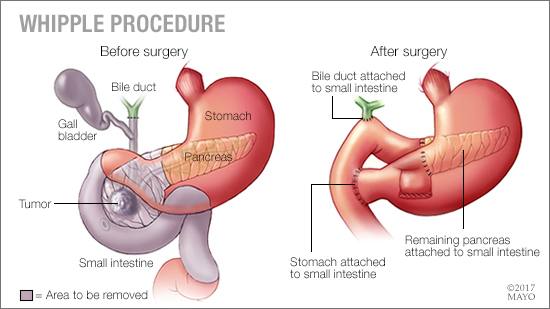-
Cancer
Living With Cancer: Whipple procedure for pancreatic cancer
 Whipple procedure: An overview
Whipple procedure: An overview
A Whipple procedure, also known as a pancreaticoduodenectomy, is a complex operation to remove the head of the pancreas, the first part of the small intestine, the gallbladder and the bile duct. It is the most common surgery to treat pancreatic cancer that's confined to the head of the pancreas. Find out more about this and related procedures for treatment of pancreatic disease.
Biological therapy for cancer
Biological therapy for cancer uses the body's immune system to kill cancer cells, slow tumor growth and prevent the spread of cancer. It often causes fewer toxic side effects than other cancer treatments. Learn more about the different biological therapies and how they work.
Carcinoid tumors
Carcinoid tumors, which are a subset of tumors called neuroendocrine tumors, usually begin in the digestive tract (stomach, appendix, small intestine, colon and rectum) or in the lungs. They are slow-growing and often don't cause signs and symptoms until late in the disease. Learn more about the symptoms of carcinoid tumors and when you should seek medical care.







